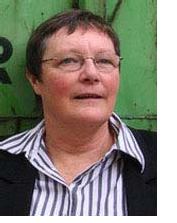Helen Verran, from the University of Melbourne, discusses one of her trainee teachers working in a Yoruba classroom in Nigeria. Verran describes a way of learning that at first did not make sense to her.

Mr. Ojo had, it seemed to me, taken an easy way out in lesson preparation with his little cards and a chart up on the chalkboard. I was not impressed with his little cards, but I was soon forced to change my opinion. Speaking in Yoruba, Mr. Ojo demonstrated the procedure, completely leaving out the neat ‘lecture’ on length that we had collectively prepared back in the institute [teacher training] laboratory.
Mr. Ojo called a small boy to the front … [H]e placed the end of the string just under the boy’s heel and stretching it, held the string at the point that matched the top of the boy’s head. Tying a loose knot at this point, he took the other end of the string from under the boy’s foot. Holding this at one end of a card, he wound the length of string around until he came up to the knot …
Mr. Ojo instructed, ‘Count the number of strings around the card. Write down the number. Multiply by ten. Then holding the bit of string remaining against the graduations on the card … Yes … ‘Diran’s height is ninety-four centimeters’.
I was scandalized. Mr. Ojo was presenting a bundle of short strands of string, a plurality, as length instead of demonstrating the prescribed singular extension. The notion of extension said to be essential for children to grasp as the ‘abstract’ element of length, seemed to have been rendered secondary, if not entirely deleted.
The children set to work in pairs or threes; soon the chart Mr Ojo had drawn on the blackboard was full of names and numbers. As a pedagogical performance, the lesson could only be judged a complete success. The children obviously had grasped using metric units to express a value. They were pleased with their accomplishment. Mr. Ojo was proud … of his success, and so was I.
Yet at the same time I was profoundly confused and puzzled. I had glimpsed the lesson as both the same and different from the one we had prepared, but I was unable to coherently explain how it was either the same or different, or why discerning this mattered. I was disconcerted and felt disempowered in being put out so.
Several … of my student group had placements in this school for their practical teaching round. When I went to watch their ‘length lessons’ the next week, they too produced cards and string, adopting Mr. Ojo’s technique with minor alterations. Soon all the teachers in my classes were teaching in this way. As I saw things, the lesson we had devised from the African Primary Science Program cards had been quite transformed, with the demonstration of linear extension in this way of teaching. For the students, it was still the same lesson: children learned to use units to measure and took pleasure in their learning.
Verran, Helen. 2001. Science and an African Logic. Chicago: University of Chicago Press. pp. 2–3. || Amazon || WorldCat
